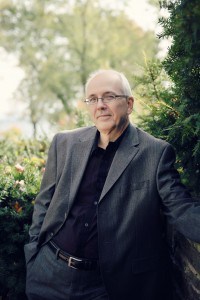
By Mark Venning, ChangeRangers.com
Special to the Financial Independence Hub
Unless extreme wild-card world events occur that might change the urban agenda, over the next fifteen years the global population will be at the highest level of its migration to cities. It is no longer a question of looking for clues in the shifting elements of demography. The lab results are in and the evidence is firmly in front of us.
I will submit here, that if there is one place where the longevity revolution is to play out most prominently, it is in the urban space. The evolution of cities will be every generation’s project – function, form, flow and the fabric of human interaction. Over the same next fifteen years, the percentage of persons older than 65 will be significantly higher and thus the need to adapt the urban agenda to a workable inter-generational model for an aging population is a key opportunity.
Need for more age-inclusive cities
Let’s face it, today’s 35-year-old will be 50 by 2030, and one can only imagine that by then the longevity revolution will begin to matter more to them. So today, as a whole society, can we not see our way to muster up some impatience and become more involved with the process of designing and building a more age-inclusive city?
In 2007, the World Health Organization (WHO) published a Global Age-friendly Cities Guide and since then a number of Canadian cities have formed community initiatives around this theme. From what I can tell, over the eight years since then, actions have been spotty: by and large, the conversation seems rather muted, if non-existent in the general population. I think the perception is that “age-friendly” is an older person’s bone to chew on.
On top of all that, cities like Toronto and Montreal are still dealing with cost and investment issues — where the money is going to come from to pay for immediate basic infrastructure improvements. The urban agenda is a very large plate and the plate is full. What makes idea generation for the future urban agenda entertaining is the fact there are multiple levels of concern other than population aging and longevity; overlays such as commercial, cultural, socioeconomic and environmental.
We can’t let this discussion belong exclusively to urban planners, government policy makers, academics and seniors’ advocate groups. We can’t just keep talking about a silver tsunami of Boomer retirements and continue to build more isolating seniors homes and so on. People want options, affordable and reflective of a wider range of views on how they to want to live in later life.
A new narrative must frame how communities can be better designed, while integrating specific incremental life stage needs of older people alongside the shared needs of all generations – remembering that positive social interaction is a major contributor to the healthier lives of all generations.
Mark Venning works with non-profit and business leaders, providing presentations, research and advisory services on the Business & Social Aspects of Aging Demographics, and 1:1 with business professionals as they reinvest their talent in Entrepreneurship in Later Life.

